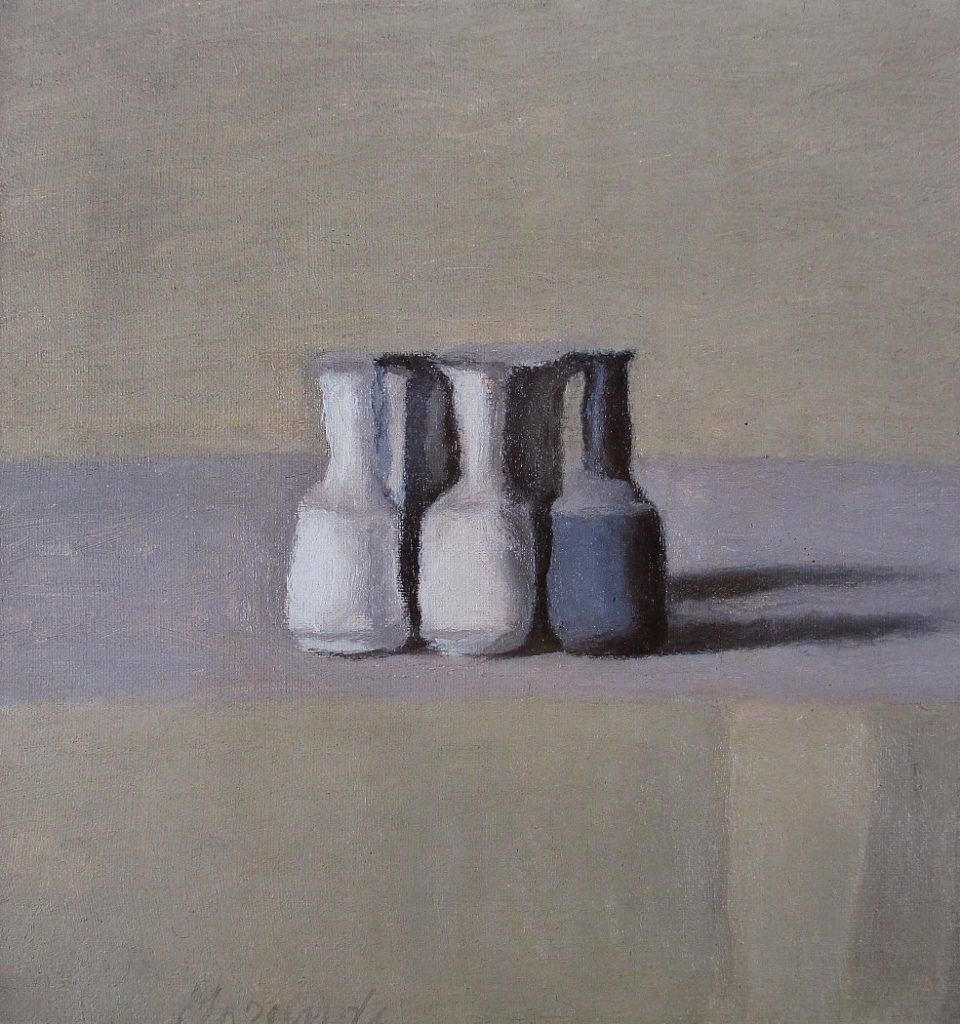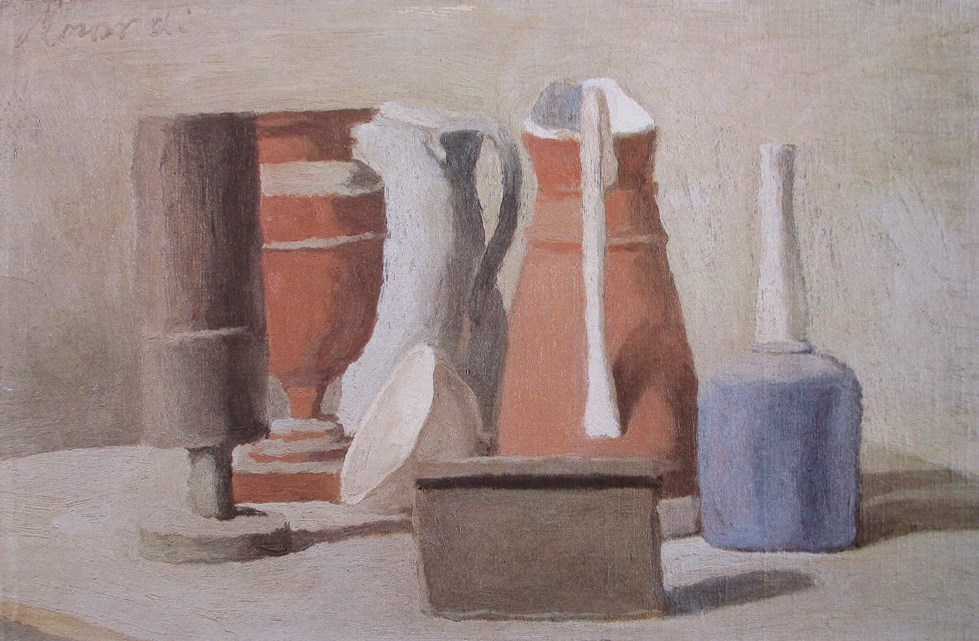
Giorgio Morandi (1890-1964) is one of those painters I’d like to write about. Like so many artists of his generation he was influenced by the Cubism and like many Italian artists he was under the influence of the Futurism and the metaphysic painting style too. He would deny the metaphysic influence later, tired of being compared to Carrà or De Chirico.
Around 1937, he retired to Bologna and started a period of experimentation and further studies related to the physical character of the objects. These experiences would take the rest of his life resulting in a series of very well-known still-life paintings. Morandi, among very few artists, deepened in the pictorial possibilities of the models and stayed true to an idea, both considering the way the models are represented and the final composition. This can also be appreciated in the works by Peter Dreher or Cristino de Vera.
It has always been said that copying the Masters is the best way to learn either to draw or to paint and it is probably true. One is able to understand and to exercise one’s hand a lot. It is so really difficult that, from a professional point of view, all works done by really good copyists are expensive.

There is a whole market for top-quality copies, galleries devoted to copies and collectors interested in this kind of works. We can see artists painting in some halls in the Prado Museum (particularly in the morning). Some are students while other are professional painters working on commission. It is so really instructive to look at the job done (always keeping the distance in order not to disturb them) as these people really know their job. Painting is a job, and a ‘craft’ too! .
Morandi is probably one of those painters people copy the most. Prima facie his still-life paintings or his landscapes seem easy to copy and so they are. Unfortunately, the Master’s personal mark seems to get lost on the slow way as us, the artists, are copying his paintings and working in something that does not belong to us. The best thing is to study his works thoroughly, especially focussing on the paint-strokes and once the drawing and the mixtures are ready, start to paint by heart.
As far as I am concerned, I spent some time ago so many sleepless nights copying Morandi’s natura morta, trying to exercise my hands. I wanted to be confident on my own possibilities. Always overwhelmed by loneliness and memories, I wanted to paint some old items such as that miner’s lamp I was really fond of.
